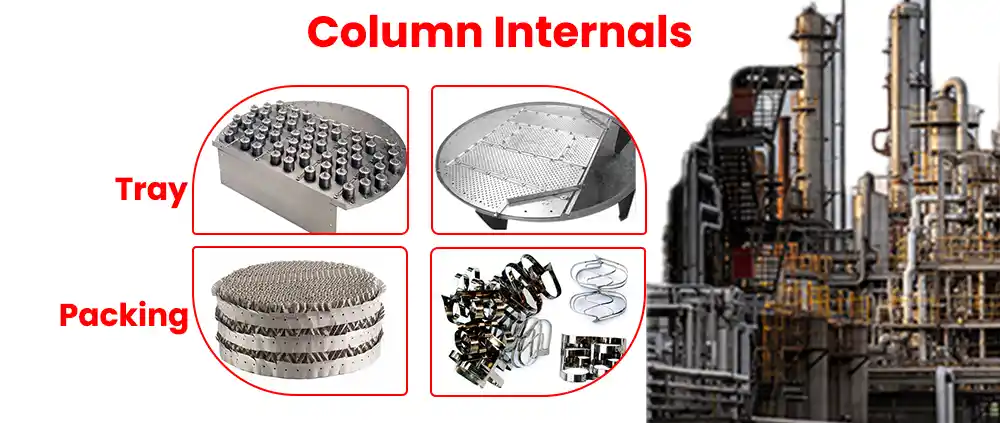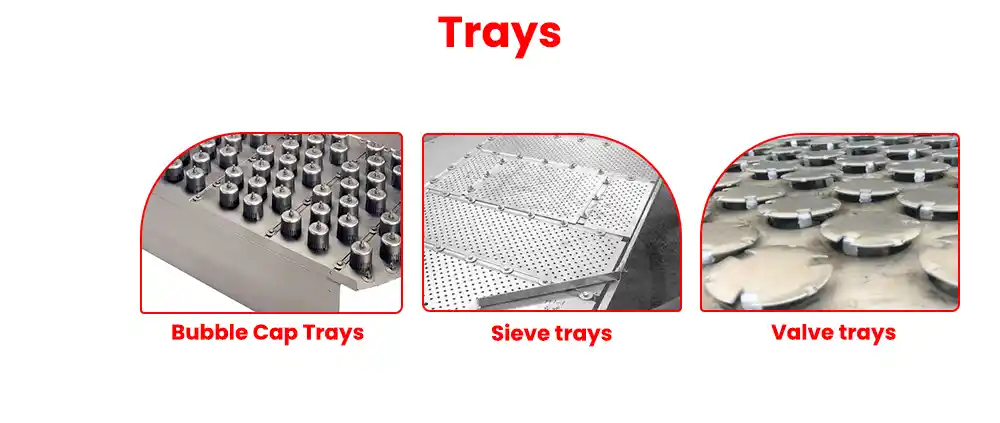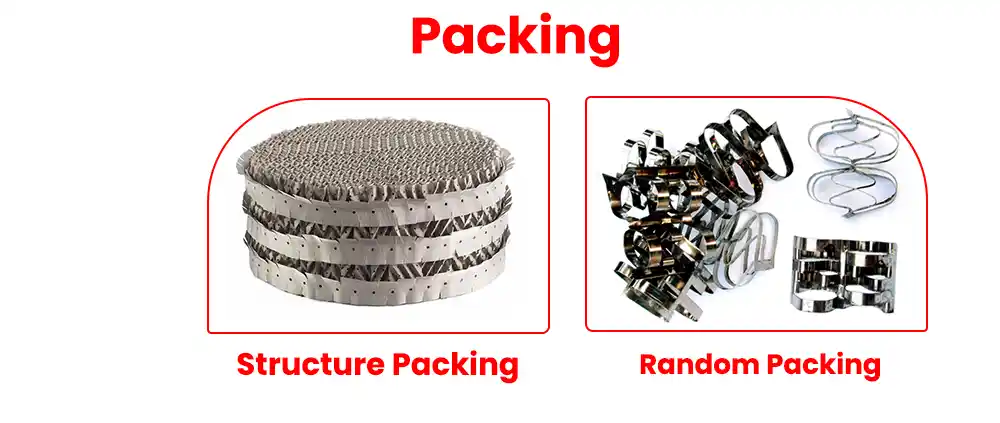What are the internals in the distillation column PDF?
Column-internals-pdf
Related searches
Introduction of Column Internals
In this article, we will talk about the internal parts of the distillation column. The internals of the distillation column are the components that help to increase the contact between the liquid and vapor phase which makes it very easy to separate the liquid mixtures which have different boiling points.
Types of Column Internals
There are different types of column internals but mainly it is divided into two types: Trays and Packings, further trays and packings are also divided into different types which we will further in detail.
- Trays
- Packings

Trays
Trays are the main component of a distillation column which are similar to plates that are spaced evenly throughout the column. The vapor flows up through the holes or slots in the trays, while the liquid flows down through the downcomers which allows a mass transfer to occur between the two phases. The vapor and liquid are brought into contact with each other at the interface between the tray and the downcomer.
A tray consists of several parts like the bubbling area, the weir and the downcomer.
The bubbling area define the tray type and its operation. The weir fixes the liquid height and the pressure drop, the downcomer allows the transit of the liquid towards the lower plate and forces the steam through the bubbling area.
There are many different types of trays, each with its own advantages and disadvantages. Some common types of trays include:

Bubble Cap Trays: These trays have caps that fit over the holes in the tray. The caps create a small bubble of vapor that rises through the hole, mixing with the liquid below. The cap is mounted so that there is a space between riser and cap to allow the passage of vapor.
Sieve trays: These trays have holes or slots in the tray plate. The vapor flows up through the holes or slots, mixing with the liquid below.
Valve trays: These trays have valves that are opened and closed by the vapor flow. The valves control the amount of vapor that flows through the tray, which affects the efficiency of the separation.
Design of Tray
Each tray acts as a mini-column, and achieving a fraction of the separation. So we can say that the more trays there are, the better the degree of separation and that overall separation efficiency will depend significantly on the design of the tray. Trays are designed to maximize vapour-liquid contact by considering the
- liquid distribution and
- vapour distribution
on the tray. This is because better vapour-liquid contact means better separation at each tray, translating to better column performance. Less trays will be required to achieve the same degree of separation. Attendant benefits include less energy usage and lower construction costs.
Packing
Packings are randomly arranged or structured materials that are placed inside the column. The vapor and liquid flow through the packings, coming into contact with each other at the surface of the packings.
There are different types of packing available but mainly it is divided into two types.
- Structure Packing
- Random Packing

Structure packing: This is a type of packing which is known for its efficiency and low-pressure drop. It was proposed by Labbe and allows to decrease the size of columns compared to other distillation column internals. This packing consists of a set of corrugated sheets that are arranged in a honeycomb pattern (Read More to download pdf)
Read Also
Download Free Piping PDF for Interview Preparation
What is gasket and their types
What is a valve and its types?

Pingback: The Role of Proper Sewer Piping - Download 5 free PDF
Pingback: Heat Exchanger Furnaces - Download 5 free PDF
Pingback: What is Demister Pad in Process Piping - Download 5 Free PDF